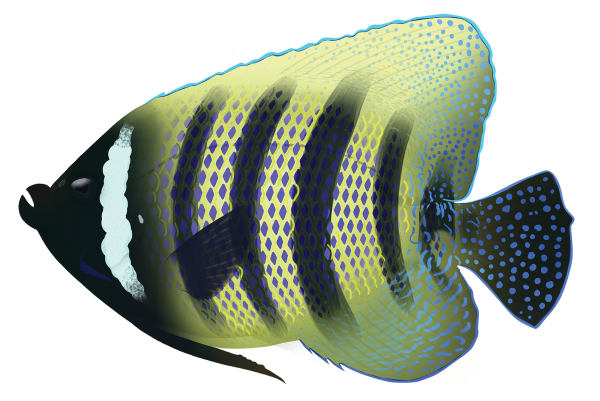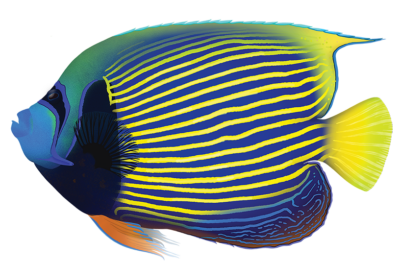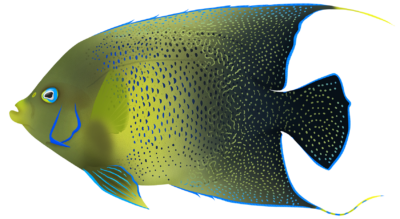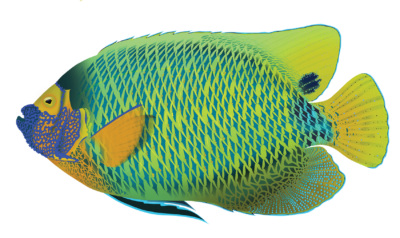Quick Facts
Distribution
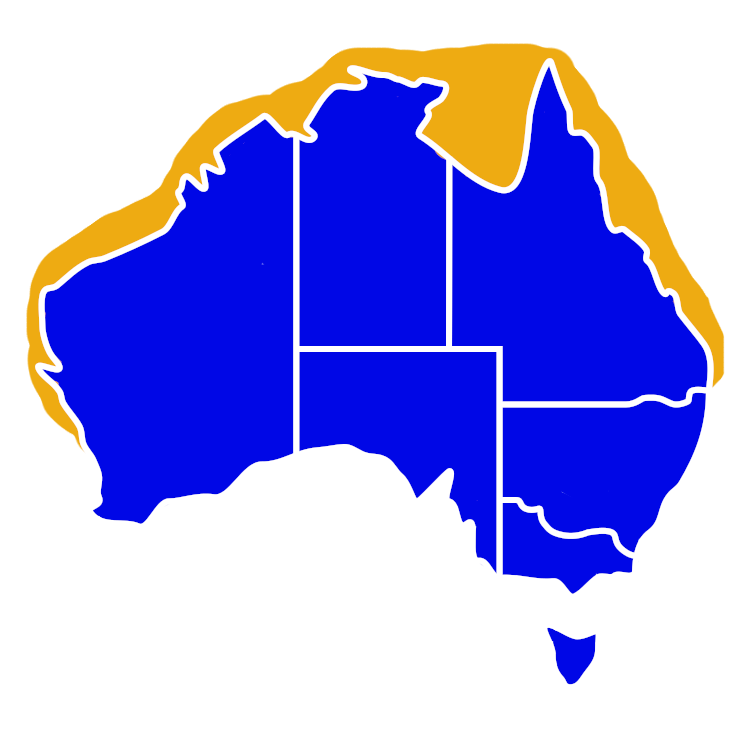
Interesting Info
- The Sixband Angelfish are a semi-aggressive fish and are generally solitary but can be found in pairs. When they do pair up the generally do so for life. Young fish stay in the shallows whilst adults can be found in up to 60 m (196 ft).
- Sixband Angelfish like many other angelfish are broadcast spawners, releasing their eggs and sperm towards the top of the water column or surface at dusk. The fertilised eggs then float with the current and eventually settle on the bottom.
- The Sixband Angelfish is known by snorkelers and divers to grunt in warning when being approached
- Juveniles are very different to adults, with dark blue and black colours highlighted by light blue and white lines. The change in juvenile colours to adults starts when the fish reach the length of 8 to 15 cm (3.1 to 5.9 in).
- These fish are omnivores and primarily feed on algae, coral and sponges, but also eat small invertebrates, zooplankton and plants.
- Estimates on lifespan have them reaching up to 21 years of age.
- The main predators of angelfish include sharks, larger predatory fish and marine mammals.
Species Interaction
Aquarium & Reef
The Sixband Angelfish also known as the Six Bar Angelfish is a popular reef species known for its dark vertical stripes and grunting noise they make when being approached. Juvenile fish typically stay in the shallows of inner reefs and lagoons whilst adults can be found on the outer reef in caves or crevices.
The fish has a large range across the Western Pacific Ocean, particularly South Pacific reefs, from Australia and as far north as Japan and Taiwan.
Scientific Classification
Kingdom: Animalia
Phylum: Chordata
Class: Actinopterygii
Order: Perciformes
Family: Pomacanthidae
Genus: Pomacanthus
Species: Pomacanthus sexstriatus
Conservation Status
Based on the International Union for Conservation of Nature (IUCN), the Sixband Angelfish is currently categorised as “Least Concern”(LC).
LC is the lowest category on the scale for risk with “Extinct”(EX) being the highest.
Fish Taste Quality
Sixband Angelfish are a edible fish but are not a targeted species for consumption.
Taste Rating: 0/5
How to catch
Sixband Angelfish
Catch Difficulty: Easy
Tackle: Running Sinker Rig
Bait: Sponge, Weed, Worms
Popularity: Not targeted
Sixband Angelfish
As Aquarium Fish
Care Level: Moderate to difficult
Temperament: Semi-Aggressive
Diet: Omnivore
Reef Compatible: With caution
Minimum Tank Size: 220 gallons
Recreational Viewing
- Snorkeling & Scuba
Finding: Easy
Temperament: Semi-Aggressive
Danger: None


